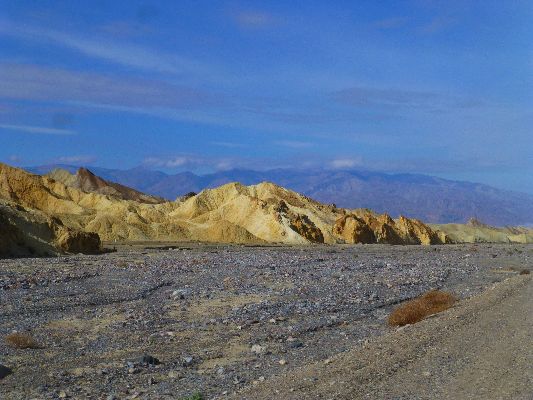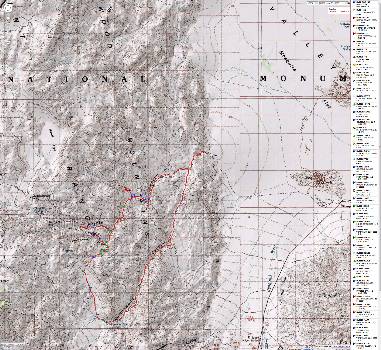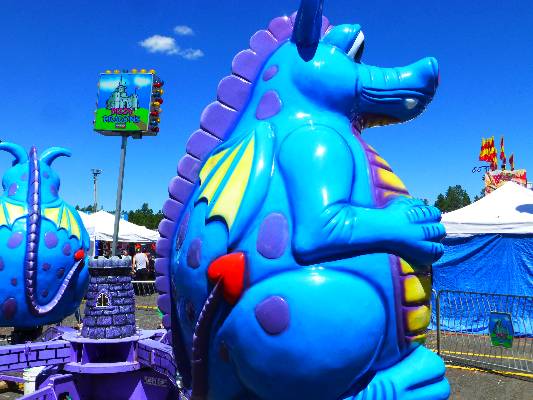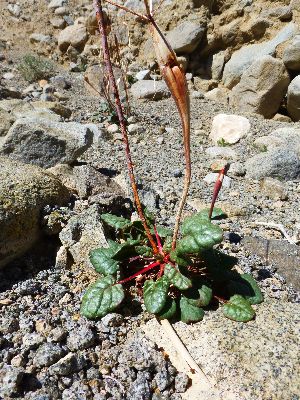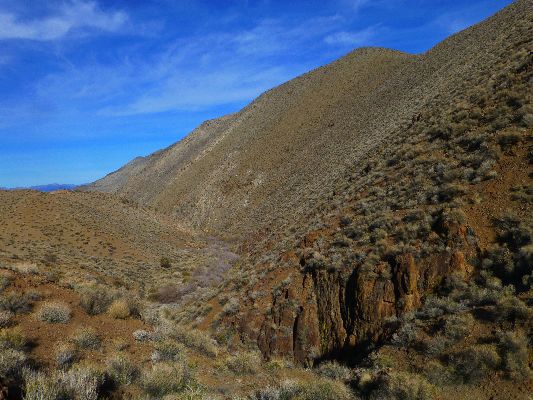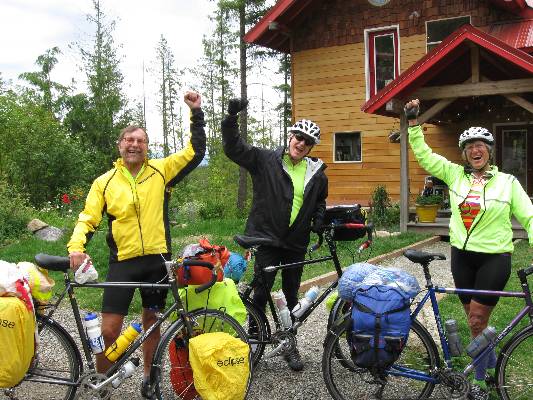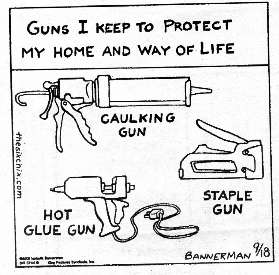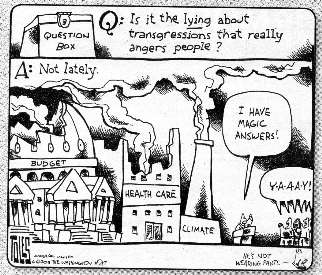Backpacking the Cottonwood - Dead Horse - Marble Loop
Biking Bad Water and Artist Loop, toward Dante View, and Stove Pipe Wells

|
| |||||
|
| |||||
| ||||
The bicycling adventures and Furnace Creek CG events were organized by Cheryl
Soshnik and others of the Wasatch Mountain Club. The backpack was organized by The Wild Vagabond.
Death Valley Dreaming - Day 1 Bike






Death Valley Dreaming - Day 2 Bike
 |
 |
 |
Death Valley Dreaming - Day 3 Bike
 |
 |
 |
 |
 |
 |
| ||||
Preliminary: Following three days of Death Valley Dreaming
bicycle day rides with the WMC (Wasatch Mountain Club) from Furnace Creek CG (campground) to Bad Water
and Artist Loop (42 miles); Furnace Creek CG toward Dante View (40 miles); and Furnace Creek CG to
Stovepipe Wells (50 miles); a total of 132 miles bicycling, Dave and I meet Dan and Elmira and drive
the sand trap near Stovepipe Well and bumpy road to the area near where the combined, yet dry,
Cottonwood-Marble Canyon spills through a final limestone narrows and out toward Mesquite Flat.
Summary: Cottonwood-Dead Horse-Marble Canyons Backpack Loop.
Co-adventurers: Dave Rumbellow, Dan Greenspan, Elmira Freeman, Rob
Camera: Panasonic DMC-ZS19
ERM - Energy Required Miles. A mile is added for every 500' elevation gain or loss.
It's a very serviceable method of estimating energy required miles. Total trip - (per my GPS) of 37 miles and total ERM = 57. (Includes side trips.)
Packing up, we're on the trail toward the junction of Marble and
Cottonwood Canyons for the Captivating Cottonwood Circuit.
This 37-mile (57 ERM, Energy Required Miles) backpack loop, with side trips, is
said to be the "most popular" backpack in DV (Death Valley). Go slightly off-season and you
may encounter wondrous solitude. It's popular because it features wonderful limestone narrows
and has water near decent campsites. Just how popular is backpacking in DV? I suggest you
take topo maps (Harris Hill & Cottonwood Canyon 7.5 minute quads; USGS) and talk with the DV
Rangers about the route into Dead Horse from Cottonwood. Then, enjoy the trip, there's some
terrific stuff to see out there.

| ||||
| ||||
Day 1 of backpack (Feb. 9th): Sidewinder. To Sidewinder Springs area; 10.6 miles; ERM = 13; camp at 2600'.
Starting from the Furnace Creek CG, post Death Valley Dreaming with the WMC,
we convoy to the Stovepipe Well Ranger Station and sort equipment into two vehicles, then proceed through
the 1/4 mile of deep sand and to the TH. After packing the packs, we're off on the Cottonwood - Dead Horse
- Marble loop, past petros and geologic splendor.
Past intricate, contorted, convoluted and twisted geology whose development
has taken nearly 6000 years according to the creation crapologists we trudge. Quartz starbursts inlaid in
granite intrusions into ancient limestone formed by primordial seas. Wondrous. We are cruising up the
Cottonwood side of this loop, walking the jeep road for several miles.
Approaching the road end, we see a distant tree, then another. Water
begins to gurgle and burble in the drainage.
Deluxe. The day is dropping into dusk as we continue to the Sidewinder area beyond the road end and
search for a camp. Choices abound. The cool air comes cruising down canyon as we set up camp.
Road note - the sandy clog on the road to the TH is near the end
of the airport, just out of Stovepipe Wells. Roving dunes are shown on the map. So, if you make it
through the first 1/2 mile beyond the pavement, you'll probably have better conditions all the way
to the TH.
Cottonwood Circuit - Day 1 Hike
 |
 |
 |
 |
 |
 |
 |
 |
 |
| ||||
Day 2: Cottonwood Trail Apples. To Cottonwood Spring; 4.1 miles; ERM = 9; camp at 3675'.
The piles of trail apples deposited by unshod horses and burros decorate
the breeze-swept hill above the terminus of Cottonwood Spring. Dave and I have arrived at the upcanyon end
of the delightful flow of clear spring water, emanating from a morass of verdant duck weed. It's time to
treat water and enjoy a bath while we wait for Dan and Elmira to saunter into the area. Camp is under some
spreading Sycamores in the maze of brush clumps above the spring.
Today we enjoyed the riparian walk along the Cottonwood flow. Trickling,
burbling, gurgling, rustling water in this very dry desert. Delightful.
Dark collapses quickly on us and a Long-eared Owl entertains us with his
haunting hootage.
Cottonwood Circuit - Day 2 Hike
 |
 |
 |
| ||||
Day 3: Dead as a Horse. To Dead Horse-Marble Junction; 7.3 miles; ERM = 13; camp at 3100'.
The crystal slushee tinkles in the water bottle. Frozen. Cold last night.
And, this morning too. I'm happy that I brought the heavy sleeping bag. Soon, we're seeking full sun in
the open wash above camp. A wild horse flips its tail at us and hides behind a tall creosote bush, not
appearing to be concerned, yet watching us carefully. We trudge on, up the wide, shallow wash, past eerily
incongruent signs for Keeler and Jackass Springs. Street signs in the Death Valley Wilderness? Odd.
The vague and easily-missed unmarked route diverges from the wash and climbs
over a pass, then drops down the fall-line and past a dry spring to what appears to be a natural route
dropping gracefully into a drainage. It's a trap. The NPS cautions to not go down this alluring drainage,
which reportedly ends at a series of impassable dry falls (impassable except for canyoneers with lots of
rope, apparently).
Here, the true route climbs to the open ridge above Dead Horse Canyon and
then drops off the right side of the ridge before curving around into Dead Horse. Not a particularly obvious
route, yet once on it, it goes just fine.
Now we begin the search for water as we roll down canyon toward the
Marble-Dead Horse junction. It's dry, we note as we pass a bighorn sheep skeleton, wondering if this is
a premonition of our dehydrated fate. Desiccated bones drying, baking in the desert, or a delightfully
irrigated gullet - lounging in camp? I'm beginning to wonder about water (mostly lack of water) as we
cruise farther and farther down the canyon.
Yahoo! We find a trickle of water about a quarter of a mile above the
Dead Horse-Marble junction. Just right. Camp goes into place and we enjoy the last glow as the sun drops
below the high wall to the West.
Cottonwood Circuit - Day 3 Hike
 |
 |
 |
 |
 |
 |
 |
 |
 |
Day 4: Marble Loopo. To Marble Spring and over the divide to Dead
Horse Canyon, then loop back to camp (dayhike); 5.8 miles; ERM = 10; camp again at 3100'.
The white veins of polished marble are imbedded in the limestone narrows,
and at times marble is the predominant rock. Smooth as the bilking by rich repulsicans, forcing
personhood for corporations and casting humans into poverty. The flow of wealth inequality producing
two Americas has been subtle and at the same time jarring. Callous for sure. Lots of religious talk,
very little compassionate behavior (so typical). Propelling us into third-world status. Realistically,
America is already a third-world state, as evidenced by wealth inequality (welfare for the rich, failed
capitalism for everyone else), number of hungry people, lack of health care (the bible is not a health
care document), poor support for education,
bloated untaxed hypocritical religionists controlling legislative and judicial actions (see supreme court
follies, gutting of what might have been universal health care, defunding public education to transfer money
to exclusionary schools, etc.). Want all religion and no government? See the grand success of Haiti. An
absolute rapture! Does god prefer kind atheists over hateful christians?
| ||||
| ||||
It's a crunchy time in Marble Canyon, as we walk through narrows and
wide openings. Where there's a divergence of canyons, Dave and I continue straight ahead and find a
flowing spring, clogged with moss. It's better water than we have near camp. Then, we backtrack and
head a bit up Marble, skirting around brush choking what might be a springs area in wet years. Because
of overpopulation and religious and other greed, wet years may be in the past as the rapidly increasing
spiral of global warming and weather extremes accelerates, thrust forward by unbridled population growth.
Back down Marble, I search for the route over the bump to the South and
into Dead Horse Canyon. Finding it, unmarked, it goes steeply up a narrow ravine, past a small group of
Joshua Trees clinging to existence, then over a shoulder of a divide before dropping toward Dead Horse.
The route finally dips to drainage level 0.3 miles above where we had encountered Dead Horse yesterday.
The remainder of this loop retraces out route from yesterday down Dead Horse and back to camp. It's
refreshing to stroll into camp, a camp already set-up and ready for use.
Cottonwood Circuit - Day 4 Hike
 |
 |
 |
 |
 |
 |
 |
 |
 |
 |
 |
 |
| ||||
Day 5: Ahoy! Dragon Eggs. Visit a side canyon with Dragon Eggs, then return to the
start of this jaunt; 9.2 miles; ERM = 12; camp at 890'.
We've crunched down canyon to the boulder with the faint Goldbelt sign
painted on it and we're lounging against the black quartzite-like wall snacking and staying out of the sun.
Starting in the cool, cool enough for light gloves, the day has quickly
warmed as we crunch across the limestone gravel past a Turkshead feature.
There lie them there Dragon Eggs, Arggh! Now, feeling a bit like pirates
exploring dry land, we head up the side canyon in search of Dragon Eggs. Encountering an entire nest of
Dragon Eggs about a third of a mile from the main canyon, out come the cameras. Ohh, ahh, ahoy Dragon Eggs!
I certainly am not a geologist, yet the Eggs look like some sort of chert nodule, lovely and mystical. And,
ready to hatch into an amber dragon.
Continuing up-canyon, we pass through two gorgeous narrows, perhaps the
best narrows in the Park. Secret petros of yore are encountered, perhaps guarding the entrance/exit to
the sprit world of baby-smooth limestone narrows. At times, the walls overhang and it's dark. Some minor
scrambling is required, and this adds to the wild character of the canyon. Eerie yet enthralling and enchanting.
Back and the packs, and down the main Marble Canyon we lilt, passing
through three glorious narrows and around a chockstone wedged in a funnel of tilted and convoluted
limestone layers. The chockstone looks like quartzite or some other very hard rock, and distinctly out
of place (geologically) in this land of layer cake. More petros! Inscriptions by early visitors historic
and pre-historic. Some graffiti by modern-day defilers of public lands. May the plethora of continuous
religious wars come to your house, defilers of public lands.
Popping out of the canyon, we reach the end of the road on the Marble
Canyon side of the loop. Still, we have somewhere over 2.5 miles to hike to the Cottonwood-Marble loop
junction, then another 1.5 or more to the vehicles.
My feet are ready to stop when we reach the vehicles. Dan and Elmira
head back to Furnace Creek while Dave and I enjoy bucket baths and a basic grazing trailhead meal amidst
a developing delightful sunset, glowing ruby red above the Amargosa Range - out there along the
California-Nevada borderlands. Ahh, there's a claret cup of sunset to toast the captivating Cottonwood -
Dead Horse - Marble Canyon circuit.
| ||||
| ||||
| ||||
| ||||
| ||||
Cottonwood Circuit - Day 5 Hike
 |
 |
 |
 |
 |
 |
 |
 |
 |
 |
 |
 |
 |
 |
 |
 |
 |
 |
| ||||
Cottonwood Circuit - Day 5 sunsets
 |
 |
 |
| ||||
| ||||
NPS description of the Cottwood-Marble Loop
Without Baggage map and description of Cottonwood-Marble Loop
Bird and Hike site description of Lower Marble Canyon and Side Canyon
Death Valley Dreaming: Biking and Hiking Death Valley - 2011
Death Valley Dreaming: Biking and Hiking Death Valley - 2012
Backpacking and Biking Death Valley - 2013
Scenic Toilets of Inner Earth.
Click here or on the happy cyclists to go to all WV reports about Bicycle Touring
| ||||
More Truth Than Joke:
| ||||
| ||||
| ||||
| ||||
| ||||
| ||||
| ||||
| ||||
More truth than joke - part 1
 |
 |
 |





